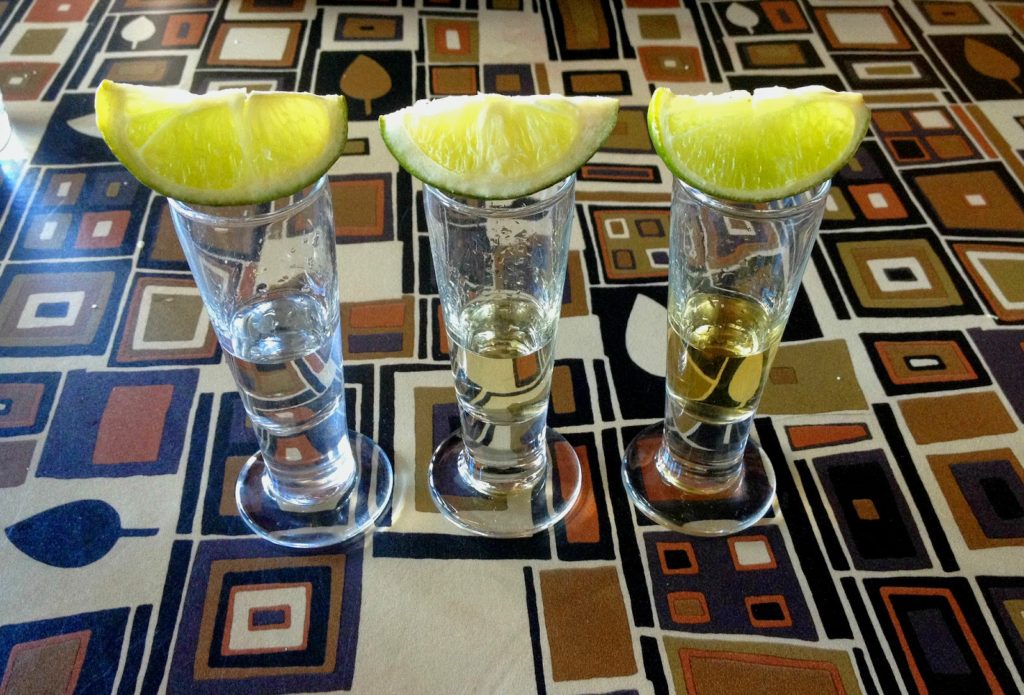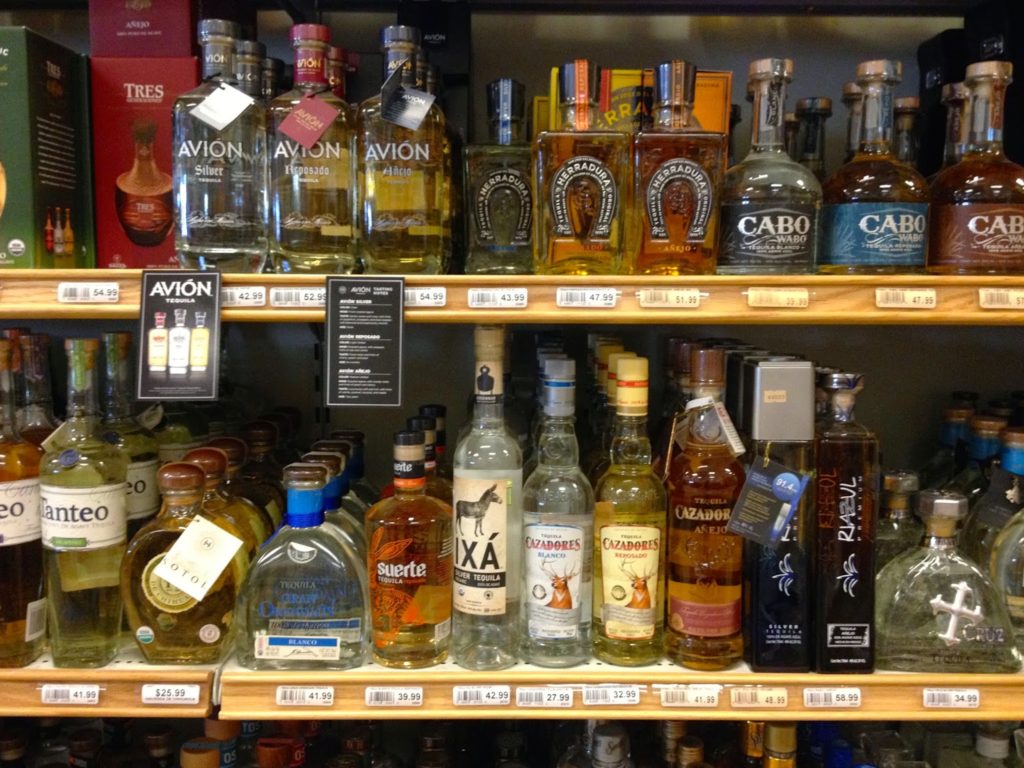Oh, tequila. While gin and bourbon evoke thoughts of complex cocktails and subtle taste variations, tequila tends to be relegated to the realm of “Hey, let’s do shots!” Until recently, I only knew that it came in clear and not-clear varieties. But a few trips to Mexico also alerted me to the fact that the attitude towards tequila in the United States is very different from that in Mexico, where it is treated more like bourbon: served straight up and slowly sipped. Certainly tequila’s unique flavor adds a lot to a cocktail. And since just about everybody will be sipping it tomorrow in honor of Cinco de Mayo, I wanted to know more about its history and the different varieties.
Tequila is a distilled spirit made from blue agave (Agave tequiliana). It’s named for the town of Tequila in Jalisco, Mexico, where much of it is made. Legally, it can only be produced in Jalisco and in limited parts of a few other Mexican states. The volcanic soil of these regions makes them perfect for growing agave. The plants take up to 12 years to mature enough to be harvested. The leaves and thorns are stripped away, leaving the massive heart of the plant. This is roasted and crushed to collect its juice, which is fermented, distilled, and aged in bourbon casks. Like wine, tequila is affected by the soil and climate in which the agave is grown and also by the length and conditions of the aging process.
The Aztecs made their own alcoholic beverage from fermented agave, so when the Spaniards arrived in the 16th century and ran out of their own booze, they started distilling agave to produce something like modern tequila. The first tequila factory was started in 1600 by a Spanish nobleman, Don Pedro Sanchez de Tagle, in Jalisco. But it wasn’t until the late 1800’s that Don Cenobia Sauza of Sauza tequila brought the spirit to the United States – a surprisingly long time for a beverage that had been made for centuries.
There are four main types of tequila, as well as some other varieties to be on the lookout for:
Tequila Blanco or Plata: This is the clear stuff. It is aged for less than two months. Blanco has a higher alcohol content than Plata. “Silver” can refer to either of these varieties. They have a clean flavor and strong agave taste, and are often used for mixing cocktails.
Tequila Reposado: This tequila is aged from two months to one year, and has a faint golden color. It begins to take on the smoky, vanilla taste of an aged tequila.
Tequila Anejo: Anejo is aged from one to three years, and looks more like whiskey in color. The taste is more intense than reposado. Anejo is often sipped like bourbon or scotch, though is occasionally used in cocktails. It can be significantly more expensive than blanco or reposado.
Tequila Extra-Anejo: This category was recognized in 2006. It refers to tequila that has been aged more than three years.
Mezcal: Mezcal describes any spirit made from agave, so it is not tequila; rather, tequila is a type of mezcal. I’m going to talk more about this in an upcoming post (and there is a lot to say), but to keep it short: mezcal is made through the same process as tequila, but from another species of agave called Maguey (Agave americana). It has a much more intense, smoky flavor than tequila even when it hasn’t been aged.
In Mexico, you may also see “Tequila Mixto” on a label, which means that what’s in the bottle is not 100% agave. The rest is usually sugar-based alcohol. In the United States, tequila only has to be 51% agave to earn its name, so you should look for “100% agave” on the bottle (this is true of mezcal too). This Forbes article points out that the pervasiveness of this cheaper mixed tequila in the US is what has given it a reputation for causing bad hangovers. Also watch out for “gold” tequila, which has had caramel coloring added to give it the look of reposado.
 |
| My tequila flight: from left to right, blanco, reposado, and anejo. |
After doing the research for this post, I really wanted to compare the different tequilas side by side, and just happened to end up at Sunset Cantina on Commonwealth Avenue the next day. They do what they call “B.A.R. flights” (blanco, anejo, reposado) of various brands of tequila. The waiter recommended Cabo Wabo, and I was impressed by how smooth it was. It was also really eye-opening to compare the smell and taste of the three levels of aging. The blanco was very herbal and bright. The reposado had a richer vanilla quality. And the anejo had tons of it. It was surprising how much it reminded me of bourbon without losing that tequila taste. I could definitely sip on a whole glass of it.
So, there you have it: tequila. Salud!






